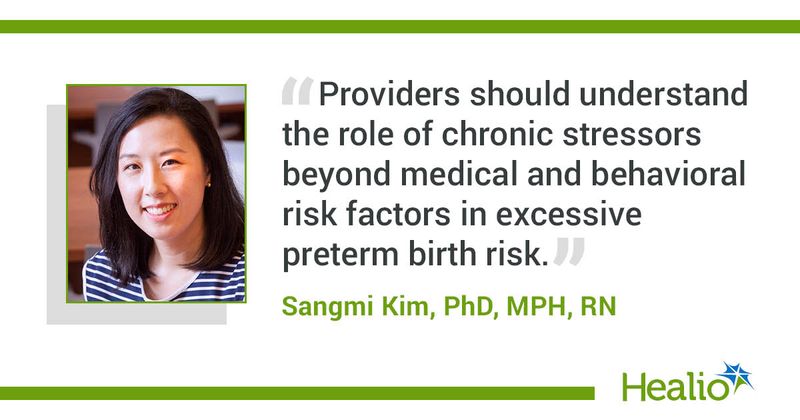Target chronic stressors to reduce preterm birth risk for Black women in US
Key takeaways:
- Chronic stressors predicted preterm birth for Black women, but not white women.
- Prenatal care visits, premature rupture of membrane and medical conditions were the top predictors for preterm birth for all women.
Chronic stressors, fewer prenatal care visits, premature rupture of membrane and medical risk factors may influence the higher preterm birth rate for Black vs. white women, study findings published in BMC Pregnancy and Childbirth indicate.
“Health care providers should understand the role of chronic stressors beyond medical and behavioral risk factors in excessive preterm birth risk among non-Hispanic Black women,” Sangmi Kim, PhD, MPH, RN, assistant professor and co-chair of the Violence Prevention Task Force at the Nell Hodgson Woodruff School of Nursing at Emory University, told Healio. “They can identify women at higher risk of preterm birth for close monitoring and intervention by gathering information about maternal education and household income, stressful life events and intimate partner violence during pregnancy. They can also provide resources to address their patients’ sources of chronic stress. A growing number of health care systems are developing their own programs or employing existing services to meet the patients’ social needs for optimal health outcomes.”

Kim and colleagues conducted a secondary data analysis using data from the Pregnancy Risk Assessment Monitoring System (PRAMS) from 2012 to 2017 linked to birth certificate data from the CDC. Researchers developed machine learning models of chronic stressors to predict preterm birth and identify chronic stressors and other risk factors for preterm birth for 81,892 Black and 277,963 white women with live births from PRAMS. The models were trained and tested using fivefold cross-valuation for each population.
Overall, 7.1% of women had preterm birth, and Black women were 1.72 times more likely to experience preterm birth compared with white women.
The best performing models showed high accuracy with an area under the curve from 0.754 to 0.765 with similar or better performance for race/ethnicity-specific models compared with the combined model.
Chronic stressors, such as low maternal education, physical abuse during pregnancy, stressful life events and lower household income, predicted preterm birth for Black women, but not white women. In addition, hypertension before pregnancy, state of residence, history of pregnancy termination, BMI before pregnancy, multivitamin intake and smoking in the second and third trimesters were also factors for predicting preterm birth for Black women. Conversely, initiating prenatal care visits in the first trimester and BMI before pregnancy were risk factors for predicting preterm birth for white women.
The number of prenatal care visits, premature rupture of membrane and medical conditions were the most important variables in predicting preterm birth across all populations.
“Future research should focus on a more accurate prediction of preterm birth by considering chronic stressors beyond the individual level, as well as both chronic stressors and biological responses to those stressors, to narrow the Black-white gap in preterm birth,” Kim said. “Particularly, considering chronic stress is known to accelerate biological aging, biomarkers that can capture women’s aging have a great potential to illuminate the underlying biological mechanisms of preterm birth and intervene to prevent preterm birth. Additionally, future research is warranted to investigate nuanced mechanisms of subtypes of preterm birth to assist healthcare providers with diagnosis and treatment.”
For more information:
Sangmi Kim, PhD, MPH, RN, can be reached at sangmi.kim@emory.edu.

